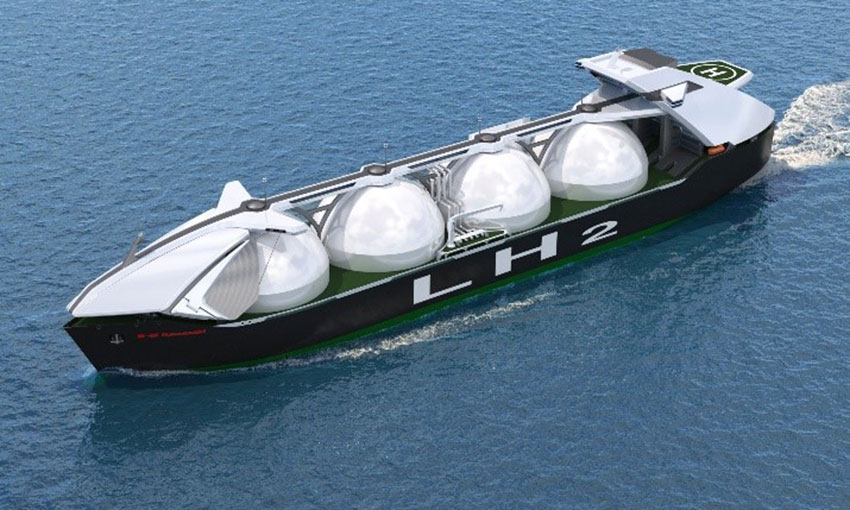Classification society ClassNK has issued an approval in principle to Kawasaki Heavy Industries for the design of a liquified hydrogen cargo containment system.
The system approved features tanks with a capacity of 40,000 cubic metres that were developed for use on large liquefied hydrogen carriers.
Hydrogen may be used as a clean energy source in the future, as it does not emit carbon dioxide when it burns.
To contribute to the maritime transportation of hydrogen, which is anticipated to expand its use worldwide, in 2017 ClassNK published its Guidelines for Liquefied Hydrogen Carriers. The publication describes the safety requirements for liquified hydrogen carriers based on IMO’s Interim Recommendations for Carriage of Liquefied Hydrogen in Bulk.
The classification society has also engaged in the classification survey during construction of liquified hydrogen carrier Suiso Frontier, which has a 1250-cubic-metre carrying capacity.
ClassNK carried out the design review of the cargo containment system for a hydrogen liquified carrier based on its Part N Rules for the Survey and Construction of Steel Ships. This incorporates the IGC Code and its guidelines incorporate the IMO’s interim recommendations.
In addition, a comprehensive safety assessment of the cargo containment system was conducted based on the HAZID risk assessment results, which has led to the issuance of the AiP.
The main features of the cargo containment system announced by Kawasaki are as follows:
- It enables transportation of cryogenic liquefied hydrogen in large amounts thanks to tank capacity on par with tanks used on large LNG carriers.
- It uses an independent, self-supporting design with a structure capable of responding flexibly to thermal contraction that occurs when loading cryogenic liquefied hydrogen.
- IT features a newly developed, high-performance heat insulation system that mitigates boil-off gas, which occurs in response to heat ingress.
- Designed to effectively utilize BOG as fuel to power the ship, thus contributing to reduced carbon dioxide emissions from liquefied hydrogen transport operations.

